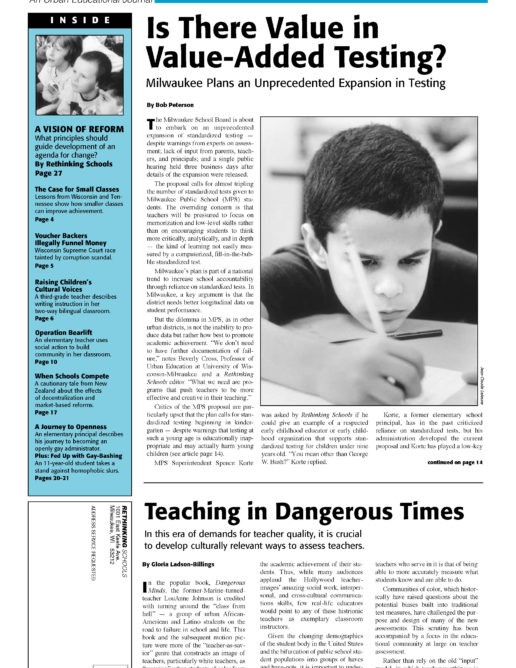Preview of Article:
Operation Bearlift
An elementary teacher, weary of gimmicks such as Gum Day and Hat Day, turns to social action to build classroom community.
It was several years ago, when I had a group of girls who were literally at each others’ throats, drawing blood, that I witnessed the power of social-action projects to create community from chaos. When 11 of the students were given half-day suspensions for fighting at recess, I knew I needed something stronger than gum or gimmicks to motivate them to learn and to cooperate instead of fight. That year we celebrated AIDS Awareness Week and proceeded to sell red ribbons to raise money for a group of local children whose mothers had AIDS. My mean and nasty girls quickly learned to cooperate as they folded and pinned the ribbons and planned their sales campaign. The magic of the AIDS ribbons project didn’t last the whole year, but after that initial experience of working for something bigger than themselves, the students and I found other opportunities.
Over the years we have bought an acre of Brazilian rain forest, sponsored a crate in the Humane Society, stocked cans in a homeless shelter, stenciled “Dump No Waste – Drains to Lake” on the storm sewers, picked up litter in the neighborhood, sent school supplies to pen pals in El Salvador, and written many persuasive letters, the latest to the newspapers and the school system about the need for a handicapped entrance at the front entrance of our school.
Each time we worked collectively for a social action project, our class expanded, at least for a time, beyond the individuals, beyond the classroom walls, and out into the neighborhood or world.
Last year I again had a group of strong personalities who fought authority and each other at every opportunity. I had other students who were so quiet and withdrawn that their voices were rarely heard. When I grouped students to do a science experiment, write class rules, or solve math problems, some groups dissolved into tears and anger, while others didn’t get started. Water was our topic, and we did several action projects, spray painting the storm drains and writing persuasive letters about water pollution; however, neither project had sufficient power to bring the class together.
HURRICANES
Our opportunity came when Martha started bringing in articles about the hurricanes in her home state, South Carolina. The subject of the hurricanes in the news was a compelling drama that appealed to students who had stayed on the sidelines (or disrupted the class) during the discussions and experiments with water pollution. As the hurricanes moved to Nicaragua and Honduras, kids brought in articles or shared stories they had heard on the news.</p

